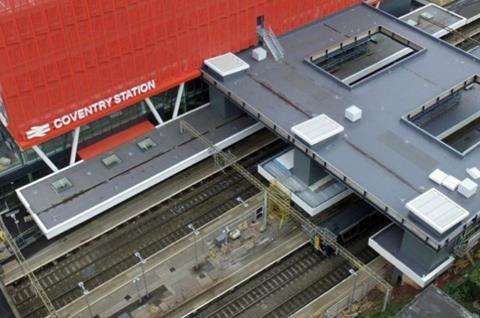
UK: Structural Fabrications Ltd supplied principal contractor Buckingham Group Contracting with the structural and secondary steelwork, curtain walling and cladding for the footbridges, staircases, lift shafts and platform canopies for the modernisation of Coventry station.
All the structural steelwork was fabricated at SFL’s headquarters in Derby, before being delivered and installed on site.
‘This was a very large project’, said Suj Kang, Managing Director at Structural Fabrications Ltd. ‘Due to the sheer size and complexity of the build, the project’s steelwork requirements increased from the original scope to over 400 tonnes — meaning that our project team had to undertake various builds within the package of works. As such, our use of constructible modelling software became even more valuable.’

Trimble’s Tekla software was used to model and draft the assets within a digital environment for sharing with the client, who were then able to import them into their design systems.
‘With many parties, subcontractors and project partners involved at any one time, all often working on different drawing systems, you really do need that common data environment and one central model’, said Kang.
‘Another feature of the software that proved beneficial to us, being responsible for the delivery of both the footbridge canopies and lift shafts primary structural steel and secondary steelwork, was the ability to view the 3D model layer-by-layer, if required. This meant that we were able to easily remove and strip back layers to view what was underneath.’

Another challenge was the architect’s requirement for smooth steel connections with zero tolerance on the steelwork, rather than the traditional flange to flange or plate to plate connection.
‘We had to design around this and incorporate hidden connections within the wider steel structure’, said Kang. ‘It was certainly challenging and a part of the project where the digital environment and enhanced visualisation offered by Tekla was invaluable. When working on a non-standard detail such as this, being able to really see, visualise and explain the design and component to the client or wider team is key.’



